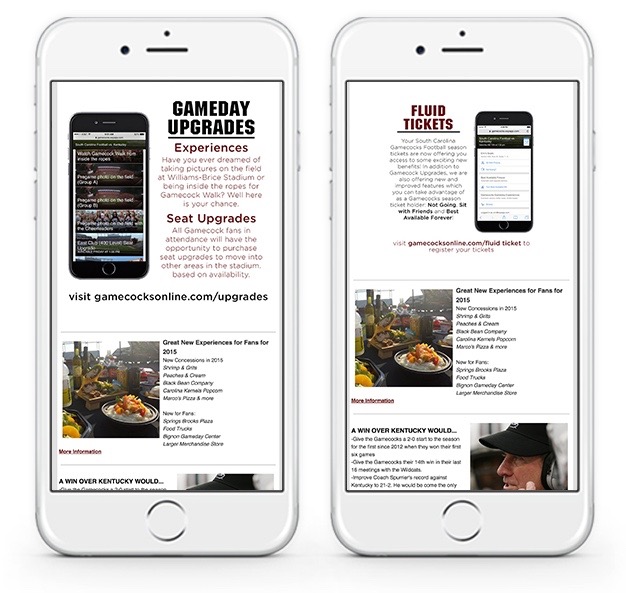Q&A: Building a Successful Email Campaign on Meaningful Data

I had a blast talking about how B2B brands can use data to build more targeted, personalized email campaigns during our recent webinar hosted by ClickZ. It's always a hot topic of conversation around these parts, so I thought I’d keep the discussion going by answering a few attendee questions from the webinar here on the Emma blog. Hope the answers spark a few ideas that send your email list (and results) soaring!
How can I use new subscriber data to gain audience insight and create new leads?
You have to pay attention to and track how your new subscribers found you in the first place. Did they join your list after reading a piece of content? Did they give you their email address at your brick & mortar location? Or was it at an event or conference? This is key to nurturing those new subscribers with content that will be most relevant to them.
For example, say someone first became a subscriber at a conference you both attended. Reference something memorable that the keynote speaker said or the awesome brownies that were served during the break between sessions. It’s a great way to form an instant connection and boost engagement right away.
How do you craft a personalized email when dropping in a first name or location is recognized by the savvy, modern recipient as “too easy?"
It’s all about sending relevant content. Every time your recipients invest the time to open your email, they’re expecting a more personal, customized experience. And if they don’t get it, they’re gone – 56% of people unsubscribe from emails due to content that’s no longer relevant to them (Chadwick Martin Bailey). But the good news is that when you get that subscriber experience right, it leads to major results. Relevant emails drive 18x more revenue than broadcast emails (Juniper Research).
Thankfully, marketers have plenty of tools at their disposal that make using customer data to create and send targeted content easier and faster than ever before. Here are some simple ways you can personalize your emails beyond simply dropping a recipient’s first name in the subject line:
1. Automate your emails. Because they use your customer behavior as a trigger, automated emails are timely, personalized and hyper-relevant to the reader.
2. Segment your audience. Information about the age, gender, geographic location, buying preferences, activity and engagement of your subscribers can help you send emails that will make your subscribers feel as if you truly understand them – because, thanks to all that data, you really do!
3. Test, test, test. The more split tests you perform, the more data you’ll collect and the better you’ll understand your audience’s habits and preferences.
What are some good data points to use when it comes to segmenting my audience?
As a B2B brand, you probably already have access to a ton of concrete information about your audience based on how they find you.
For instance, you probably have a sales or support team that is logging data based on their conversations, cases and so on. You also probably have more opportunities to track meaningful website data that’ll deliver so much more helpful information than just how many times a site visitor clicked on a particular shirt. If a new site visitor comes from an ad that was aimed squarely at creative agencies and goes crazy for your white papers covering a specific topic, then you know that that person should get more of that kind of content.
And even if you don’t have data that sophisticated, you can always monitor what content pieces perform especially well and start serving it to everyone on your list. You can serve more of that type of content to the individuals who respond well to it and try sending something different to those who don’t. Continue the trial-and-error process until you’ve identified which type of content appeals to each member of your audience.
How do you measure engagement from new subscribers?
This is all about diving into your analytics, right? So of course you’ll want to look at your total opens, clicks and shares to get an overall picture of your email’s performance.
But it’s also important to drill down further. Look at your opens by device or opens by client to get an idea of how and where your subscribers are opening your mailing. Use a click map to see if there are any trends in what kind of content subscribers click most and where that content sits within the mailing.
This all helps you find out what’s working best (so you can do more of it), and what’s not working so well (so you can try something different).
Plus, you’re bound to have a few super fans in your audience who click and share the most. Don’t forget to reward your most engaged subscribers every so often with a special deal or exclusive content. It’s the best way to inspire loyalty and create powerful ambassadors for your brand.
Can you tell me a little more about Dynamic Content?
Dynamic Content is a powerful tool that allows you to send unique, personalized content to each one of your subscribers based on the data you store about them — all from a single email. In this example, the University of South Carolina Athletics Department only sent one mailing, but the image changed based on whether or not the recipient had already purchased season tickets.

As you can see, Dynamic Content is super adaptable – it works with whatever data fields you’re capturing from your audience, whether that’s gender, age, location, purchase history, or favorite SEC team. And it helps marketers stay in total control – it only displays the content you tell it to in response to the data fields you assign.
MOST RECENT ARTICLES
Want to engage your audience and grow your brand? Try Emma's robust easy-to-use product today.











